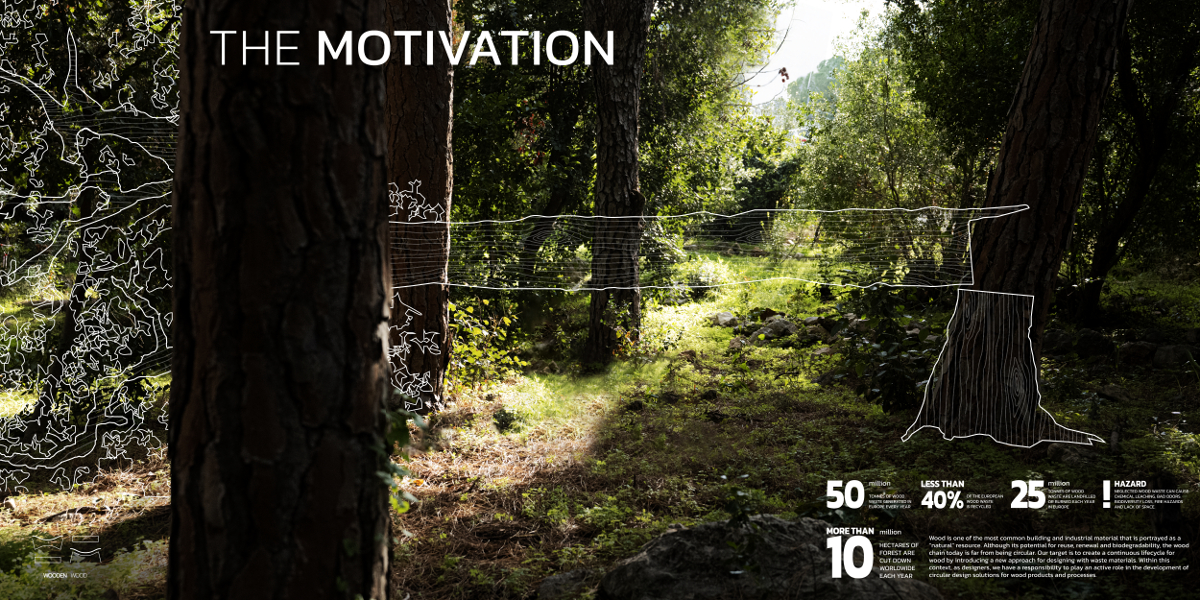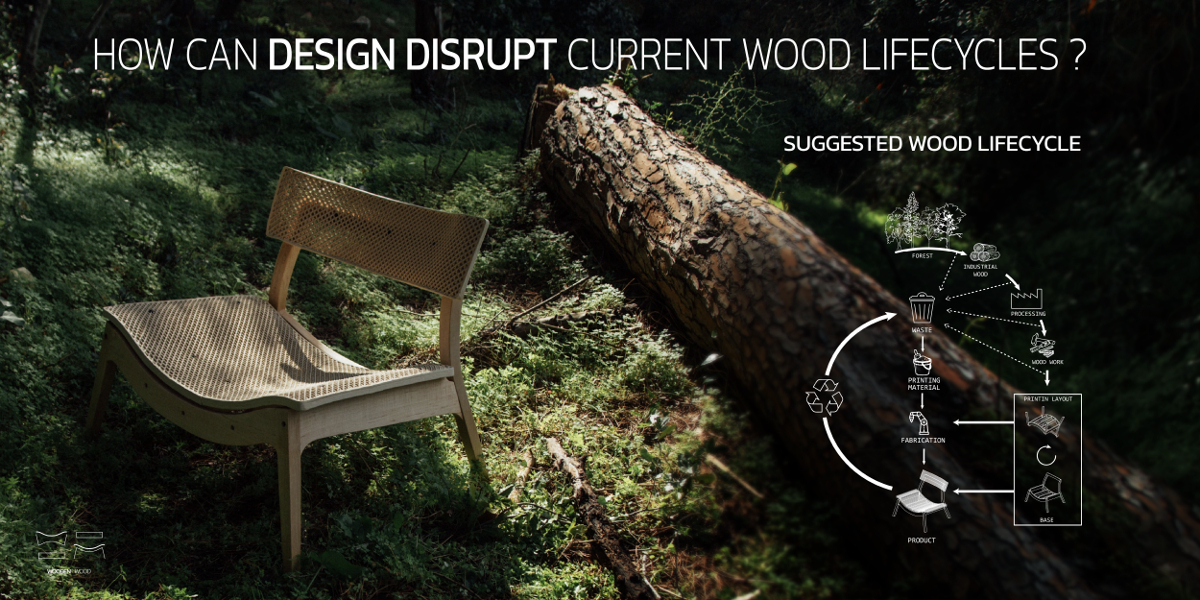AWARD YEAR
2023
CATEGORY
Community
GOALS
Responsible Consumption & Production
KEYWORDS
sustainable production, responsible production, wood , innovative technology, additive manufacturing
COUNTRY
Israel
DESIGNED BY
SAY research group
WEBSITE
https://www.instagram.com/say.reseachteam/
WoodenWood
A circular-design for wood waste enabled by robotic printing and traditional craft.
How does it work?
With billions of tons of unused wood waste, WoodenWood utilizes all-natural wood waste composed of raw wood, sawdust, and cellulose-based binders towards a new end of life. Modular woodworking expression is integrated with the robotic deposition of wood paste. The printing deposition toolpath is inspired by the textile world, however, it also achieves enhanced strength of the print that addresses both structural loads and deformation. It creates a new ‘wood-textile’ that resembles a rattan texture while using an inferior material, sawdust. A computational design setup and manufacturing workflow are developed to correlate the chair's geometrical form, the robotic printing toolpath, and material distribution properties. The raw wood structure is designed to serve as the mold for the printing process to avoid additional waste through by-products. Demonstrating a zero-waste approach, we present a new circular expression of wood enabled by the symbiosis of traditional and digital design.
Why is it needed?
Using wood waste as a new kind of material can help reduce the demand for new wood, and the amount of waste that ends up in landfills. Additionally, it actively engages with sustainable products that reduce the environmental impact of the wood industry. Our target is to create a continuous lifecycle for wood by introducing a new approach to designing with waste materials. The WoodenWood chair is a proof of concept. Its essence is to encourage the combination of traditional and digital fabrication methods into combined workflows towards zero waste design. Through the achieved printing results and the developed manufacturing workflow, we portray the possibility of enhanced performance of wood composites in both performance and expression. The recursive design workflow, through robotic printing and traditional craft, can be applied to different objects and integrate wood waste that is inexpensive, derived from recycled sources, and locally available, for mass customization.
How does it improve life?
WoodenWood is a prototypical chair that addresses the wood waste problem through responsible design with traditional and digital fabrication. Two lifecycles of wood are integrated to create a zero-waste design. Annually, more than 50 million tons of wood waste are generated in Europe and less than 50 percent are treated by recycling or conversion for energy. Neglected wood waste in landfills leads to problems such as chemical leaching, bad odors, biodiversity loss, and fire hazards. Furthermore, managing wood waste and landfills costs millions to European countries.
Within this context, as designers, we have a responsibility to play an active role in the development of circular design solutions for wood products and processes. WoodenWood develops a systemic design approach in an attempt to reduce these numbers.







